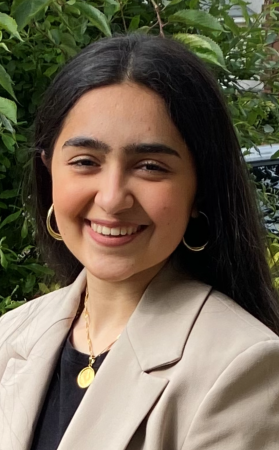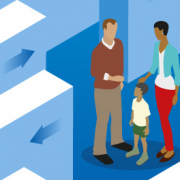Stories of rare disease: Zainab
This third article in our series for Rare Disease Day 2023 tells the story of Zainab, who was diagnosed with a non-genomic rare condition at the age of 15
 Several years ago, Zainab was diagnosed with a rare condition called generalised myasthenia gravis (MG). MG is a chronic autoimmune disorder with no genomic link; it’s caused by a person’s immune system mistakenly attacking the communication pathways between their nerves and muscles, making the muscles weak and easily tired. Symptoms include debilitating fatigue, ptosis (drooping of the upper eyelid), limb weakness, and difficulty speaking and making facial expressions.
Several years ago, Zainab was diagnosed with a rare condition called generalised myasthenia gravis (MG). MG is a chronic autoimmune disorder with no genomic link; it’s caused by a person’s immune system mistakenly attacking the communication pathways between their nerves and muscles, making the muscles weak and easily tired. Symptoms include debilitating fatigue, ptosis (drooping of the upper eyelid), limb weakness, and difficulty speaking and making facial expressions.
There is currently no cure for MG, though treatments such as steroids, immunosuppressants and surgery to remove the thymus gland, as well as the avoidance of triggers such as tiredness and stress, can help keep symptoms under control.
“My life completely changed in more ways than I could have ever imagined,” Zainab says of developing MG. “Effortless tasks became near-impossible, and leisure activities were replaced with lethargy.”
Challenges of living with myasthenia gravis
Zainab’s journey to diagnosis was long and difficult: she underwent a lumbar puncture, MRI and CT scans and seemingly endless physical examinations before a simple blood test eventually provided the diagnosis of MG. Since then, she has undergone major surgery and takes daily medication to control her symptoms – though their severity still fluctuates, and some days she still finds them debilitating.
For Zainab, one of the most difficult parts of living with MG is having to discuss it with other people. “MG is a hidden condition, [which makes it] considerably more difficult to explain,” she says. “For almost three years I kept my diagnosis hidden from everyone except my immediate family – not for fear of judgement, but because of the constant need for explanation … Some cannot fathom the variability. Others believe that just because they cannot see the autoimmune destruction going on within, the burden must not be that great. Personally, I wish more people understood that I must take each moment as it comes – I myself do not know how much energy I will have in the next week, day or even hour.”
Making a difference
Although her condition can sometimes make day-to-day activities difficult or even impossible, Zainab is determined to use her experience to help others, and is currently training to be a doctor. Having a ‘hidden’ rare disease and needing to constantly explain it to people has taught her to treat everyone with unconditional care and understanding. “When with volunteer patients, I strive to treat everyone as I’d hope to be treated if I presented with an ailment which I knew next to nothing about,” she says. “Living with myasthenia has taught me a lot about understanding, compassion and myself, and I sincerely hope that I can help transform judgement and lack of understanding into awareness and empathy.”
Myasthenia gravis is not an inherited condition, so nobody else in Zainab’s family has it. Rare diseases that do have a genomic cause often run in families, which is why genomic tests often look not only at the patient presenting with symptoms, but at their parents as well. Check back in tomorrow, when we’ll be sharing the story of Sara and Freya’s shocking familial test results.
To learn more about how genomics can be applied in the diagnosis, treatment and prevention of rare disease, you can register for our online course or visit our rare disease education hub.
We wish to thank Lucy McKay at Medics 4 Rare Diseases for her invaluable support and for putting us in touch with Zainab.
–









